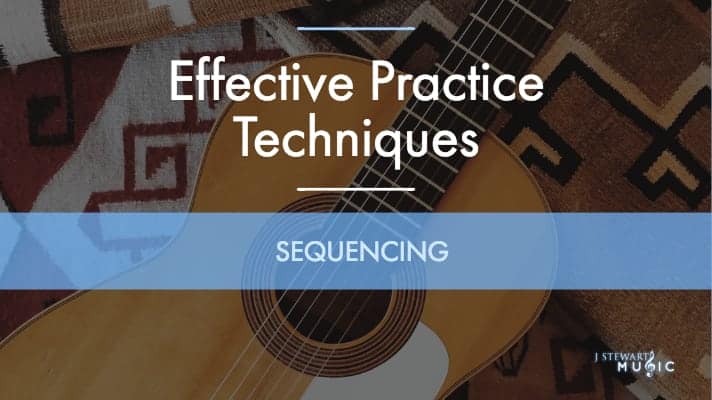I talk a lot about effective practice in my blog posts, but I’ve not gone into much detail into “what it means”. We all hear about practicing productively, and effectively but how do we do that? Well, I’ve been lucky enough to work with Gregg Goodhart a learning coach from the US and his goal is to help people learn, to learn. He’s compiled an outstanding supply of research and information over on his website here.
This post is inspired by his free: “Practical Ways to Play Better Now!” PDF he offers and discusses a selection of strategy shifts you can use to help you improve your practices. There are many that he teaches, and this post is my experience using just one of his techniques for a week.
What is Sequencing?
Sequencing in terms of music is when you take a sequence of notes, for example, three, and then take the first three notes, and then start on the second note and do three notes, then the third and do three notes and so on:
1, 2, 3 | 2, 3, 4 | 3, 4, 5….etc
I used this method myself to learn a simplified fingerstyle arrangement of the jazz tune “Satin Doll”
This is the process of one week, in which I had practiced for at least 10 minutes daily. As you can see, in particular between days 3-4 the difference is noticeable. This was where my entire practice session focused on Sequencing.
As I’ve been working on Satin Doll, here is an example of the sequence I used for my first week of practice:
So I started first with the first bar and split them up into two sequences:
I then took these two sequences and put them together like this:
So the first sequence (colored pink) is 1,2,3 and the second sequence is 2,3,4. So taking this
Brain Hurts?
“Jonathan, what the hell are you taking about this is horrible…this hurts my brain”….
Yup. That’s the point.
That’s what makes this practice technique work so damn well. It’s using something called “Desirable Difficulty”¹.
Now to avoid going geeky on you (I have a small obsession with the psychology of learning). Desirable difficulty is when you complete a task with a considerable amount of effort, but is at a level that is desirable. This desirable difficulty helps to connect the dots in ways that simple repetition could not.
By making the brain work slightly harder although slowing you down in the short term, the desired effort will help you further in the long term and will help connect the steps together in the brain far faster.
So in the example above instead of repeating the entire song, hoping that eventually I play it right – I add a desirable amount of difficulty by instead of learning it through repetition and remembering what it sounds like, I increase the difficulty of what I’m playing by changing the sequence of notes. I need to think more.
This is just one way you can use desirable difficulty to make your practice more effective, taking something you’ve been working on for weeks, months or even years and not only learn to play it, but learn to play it efficiently!
Footnotes:

